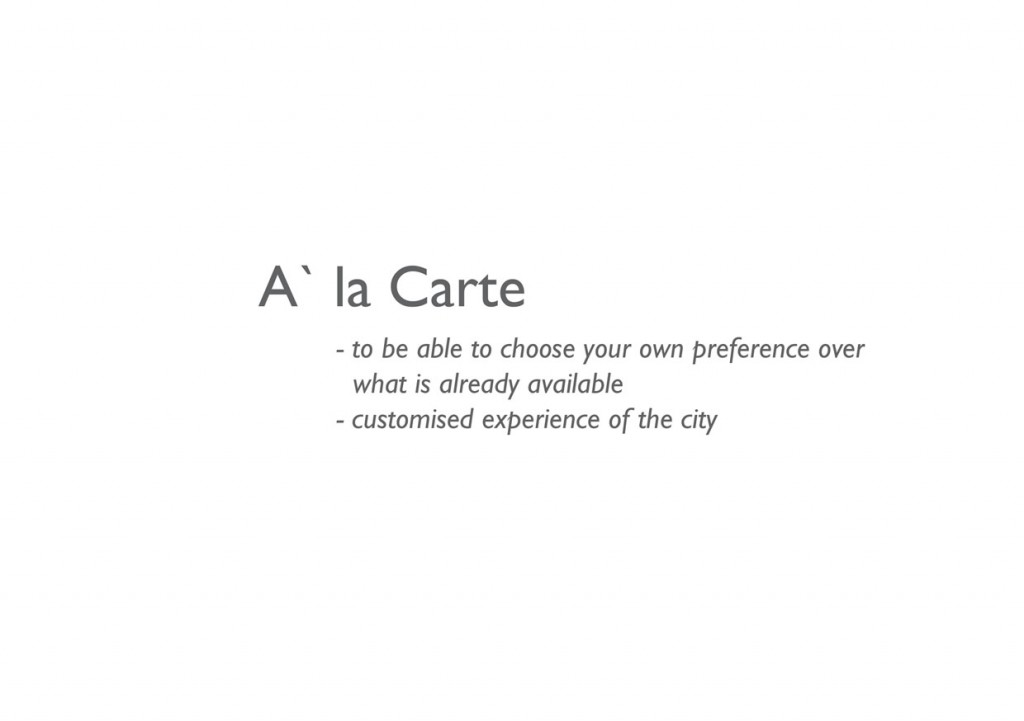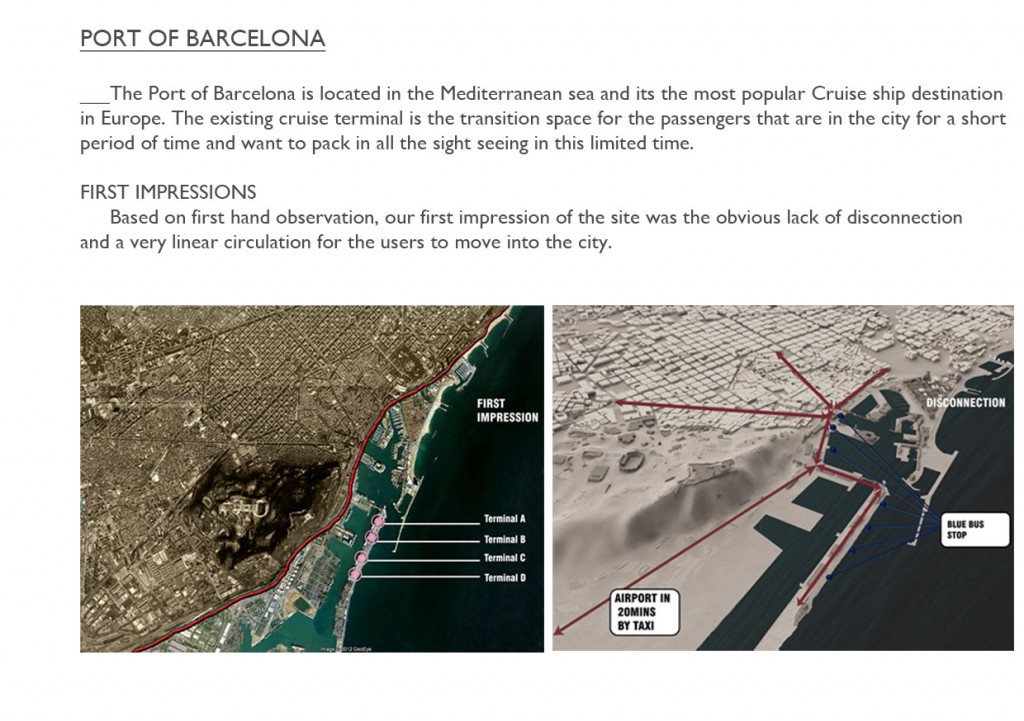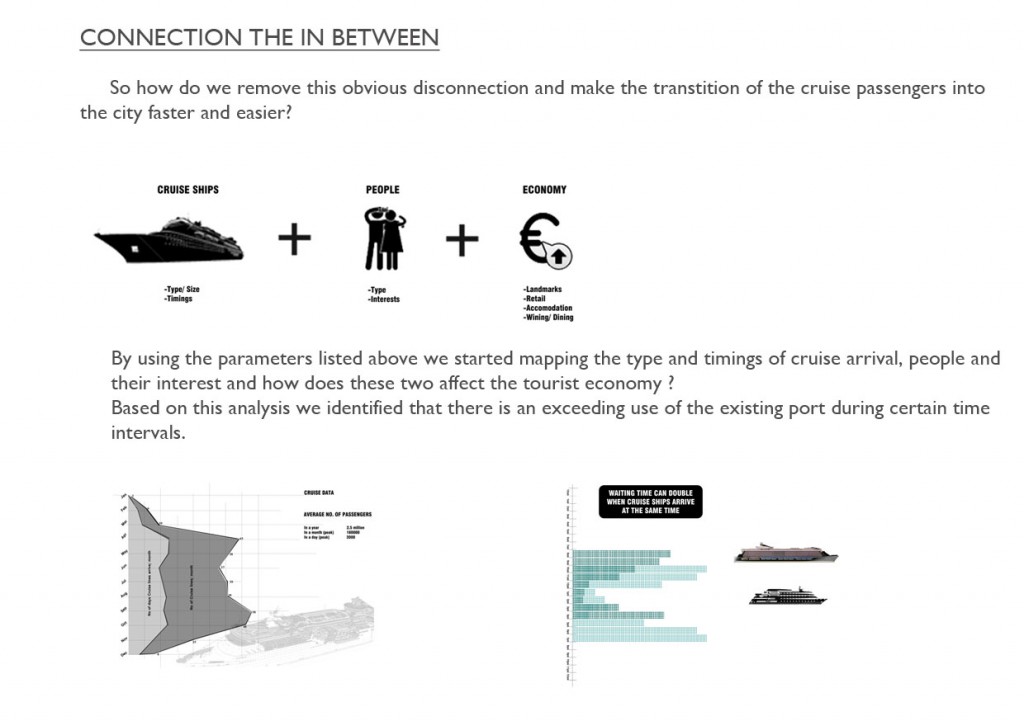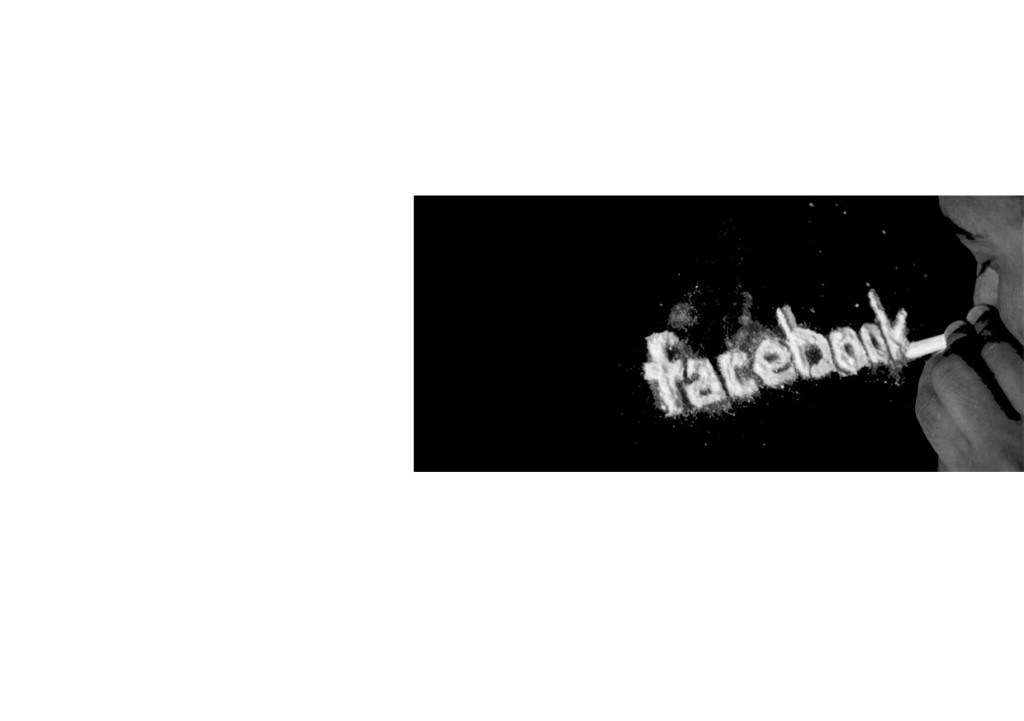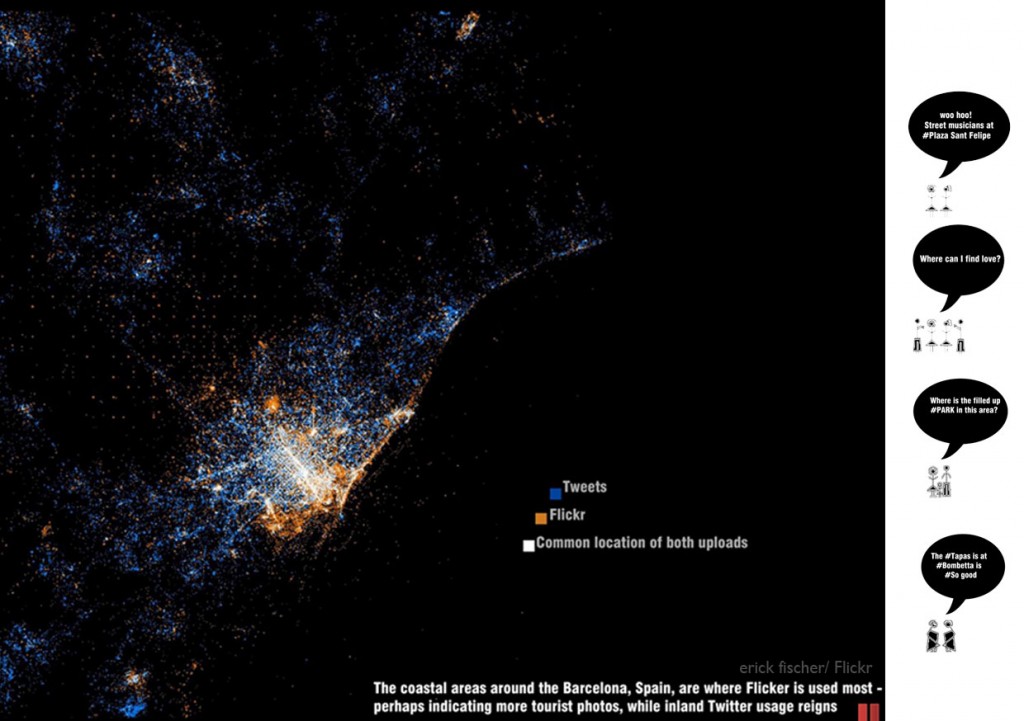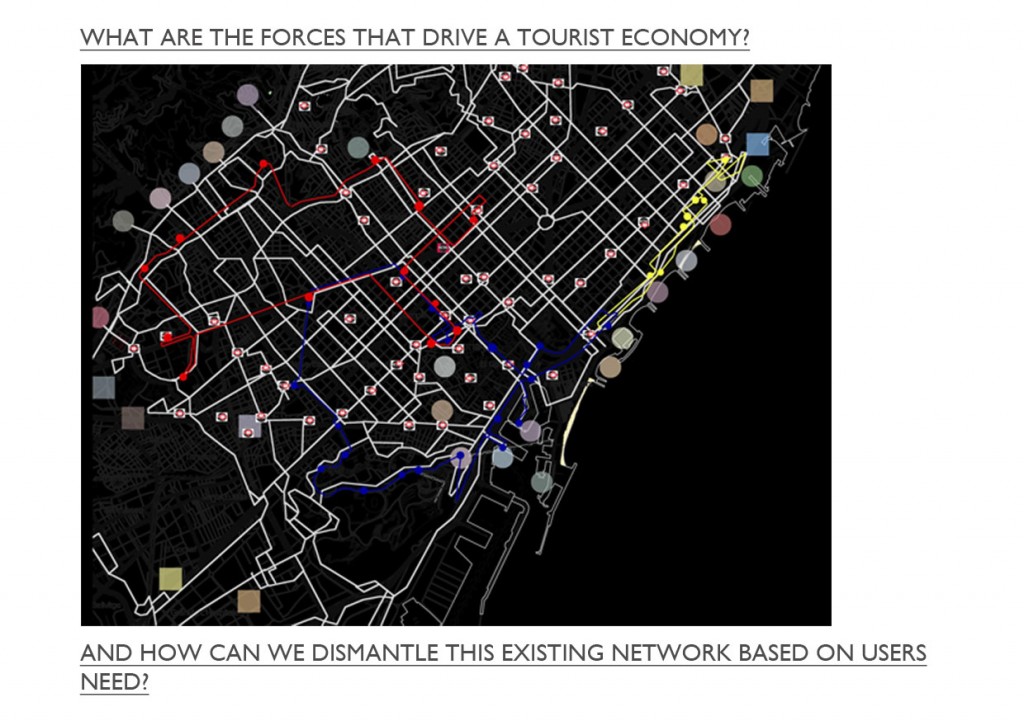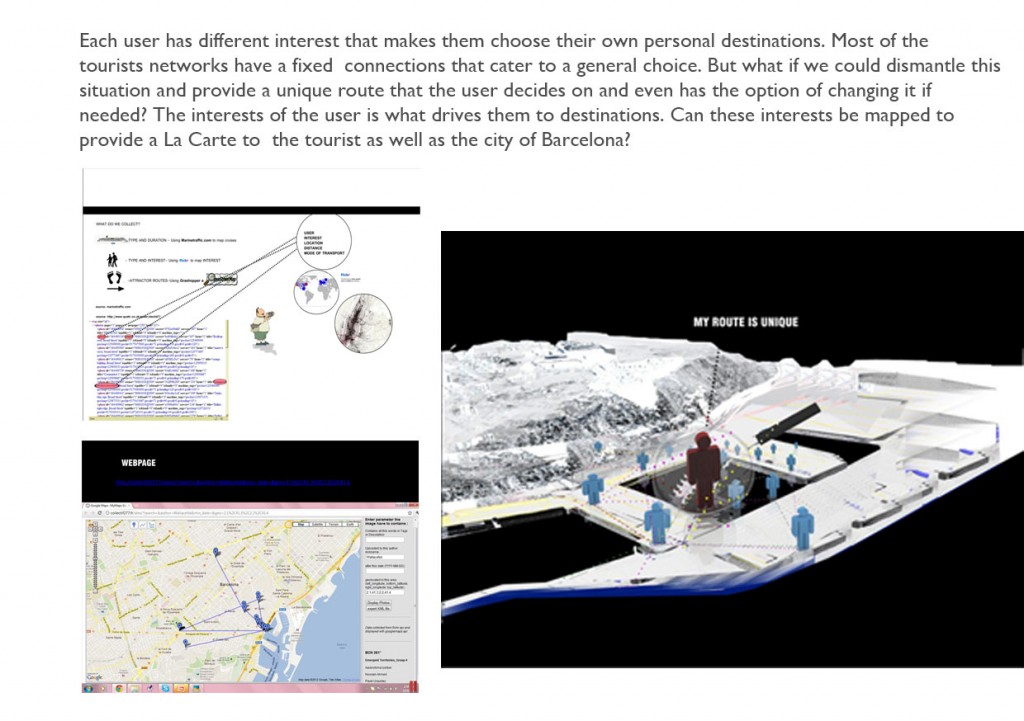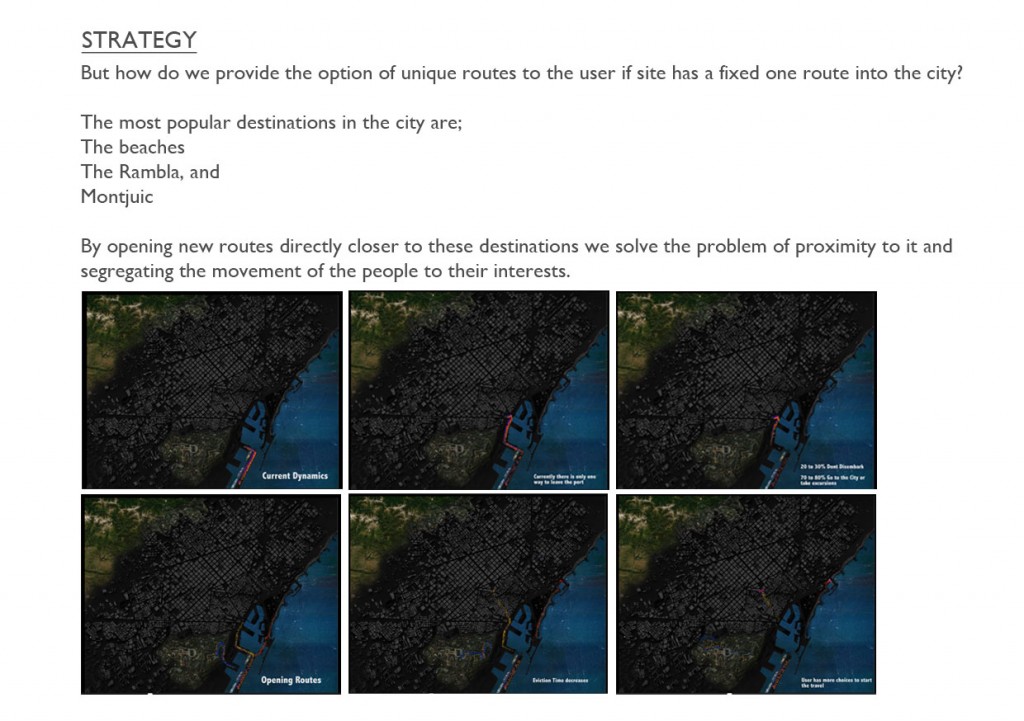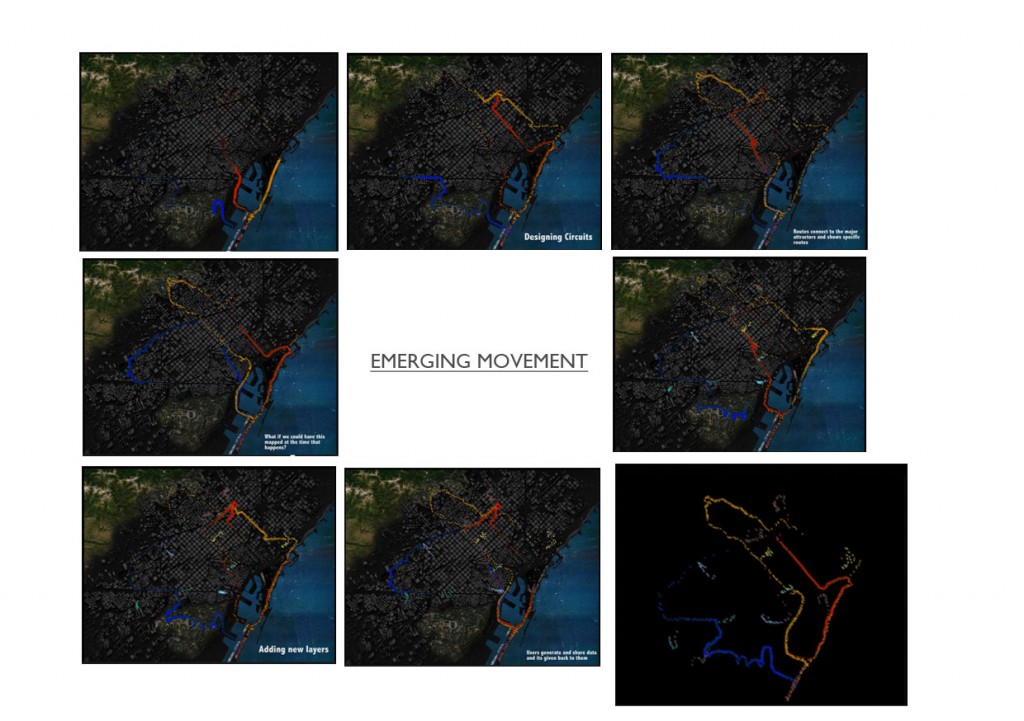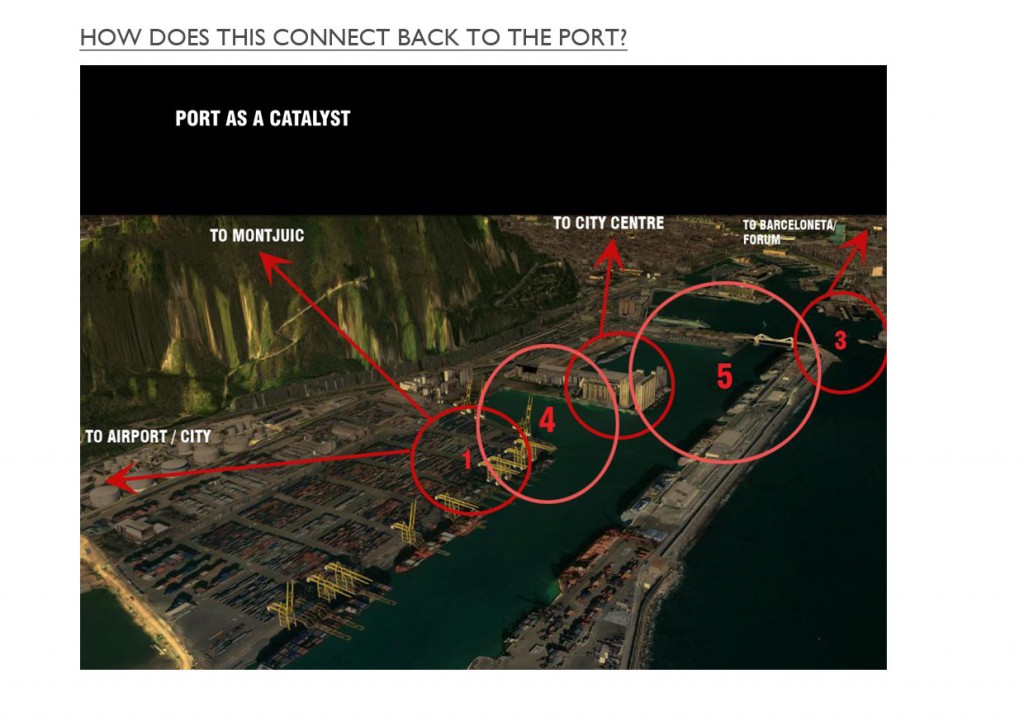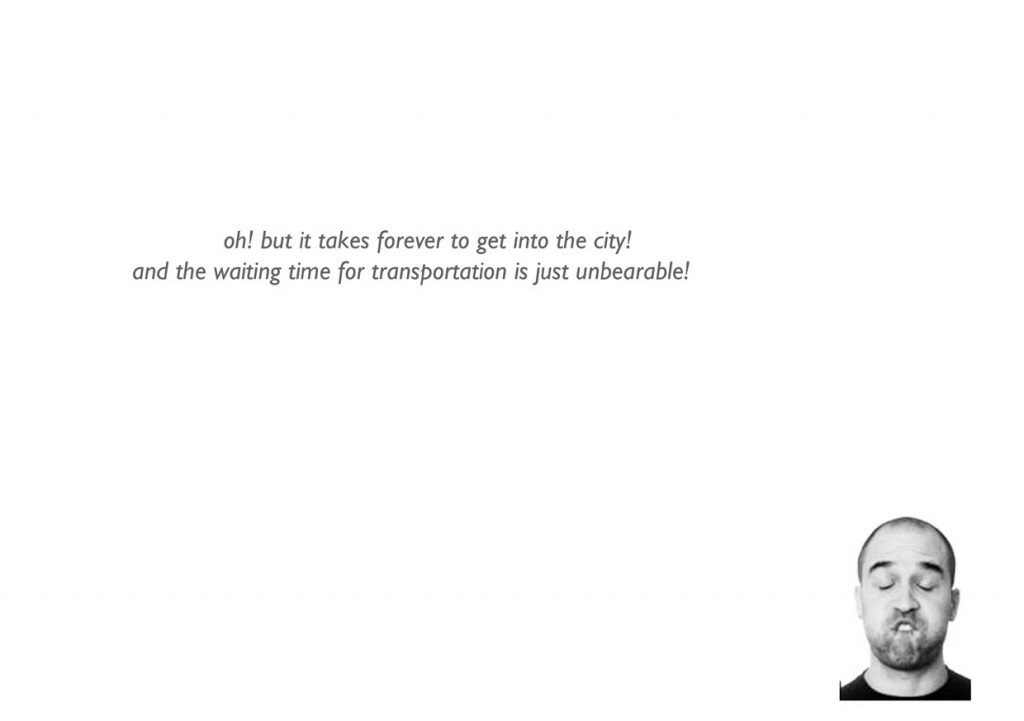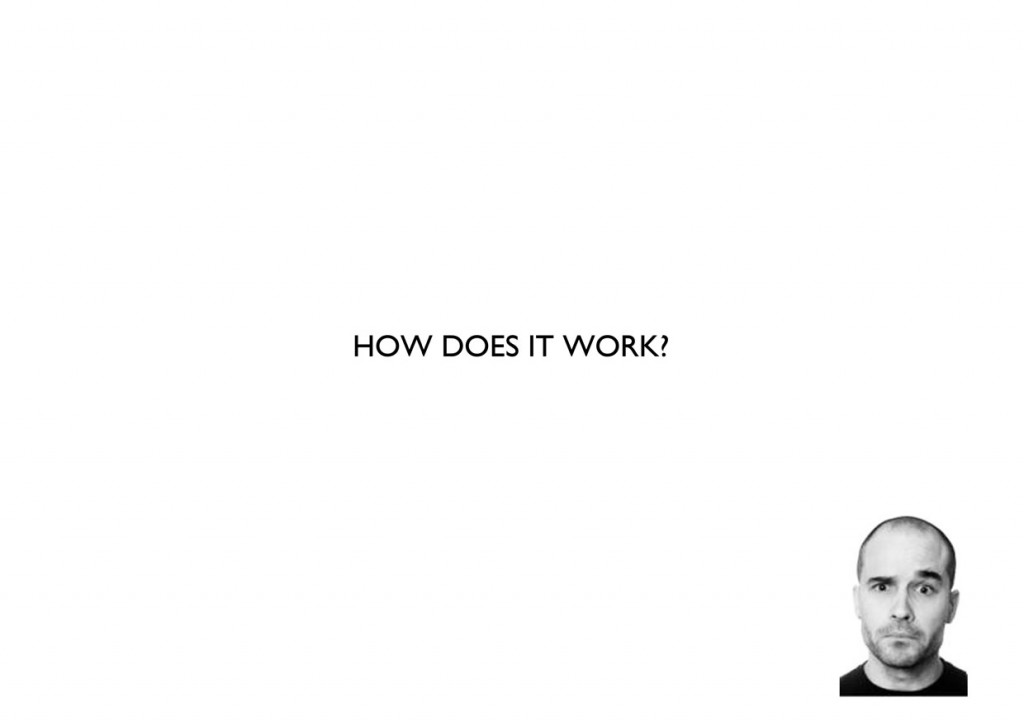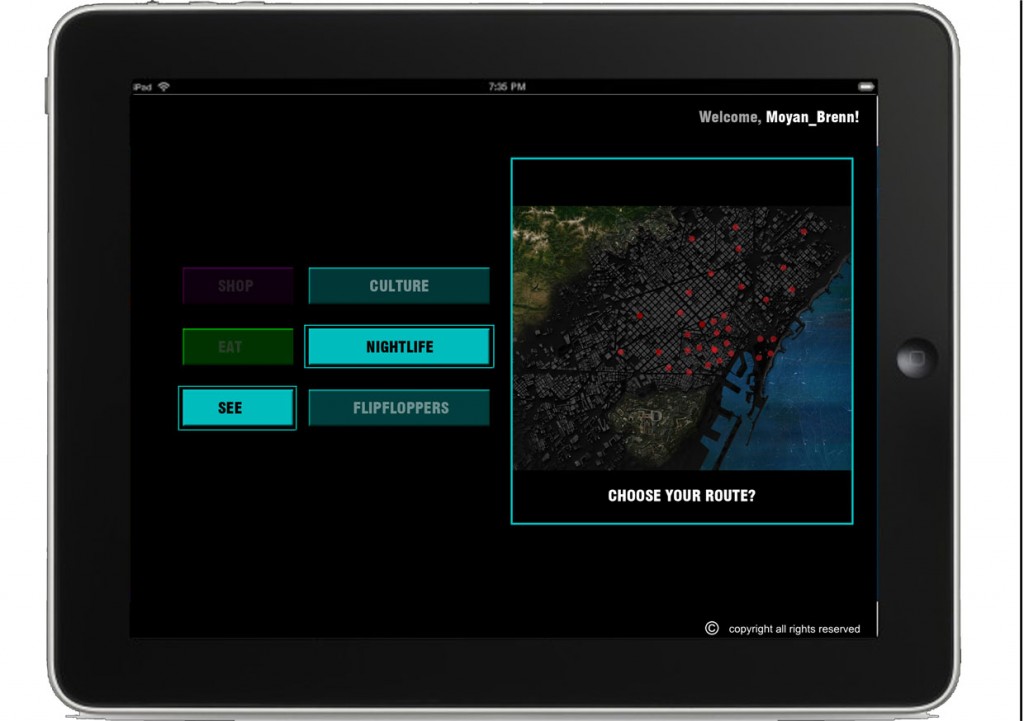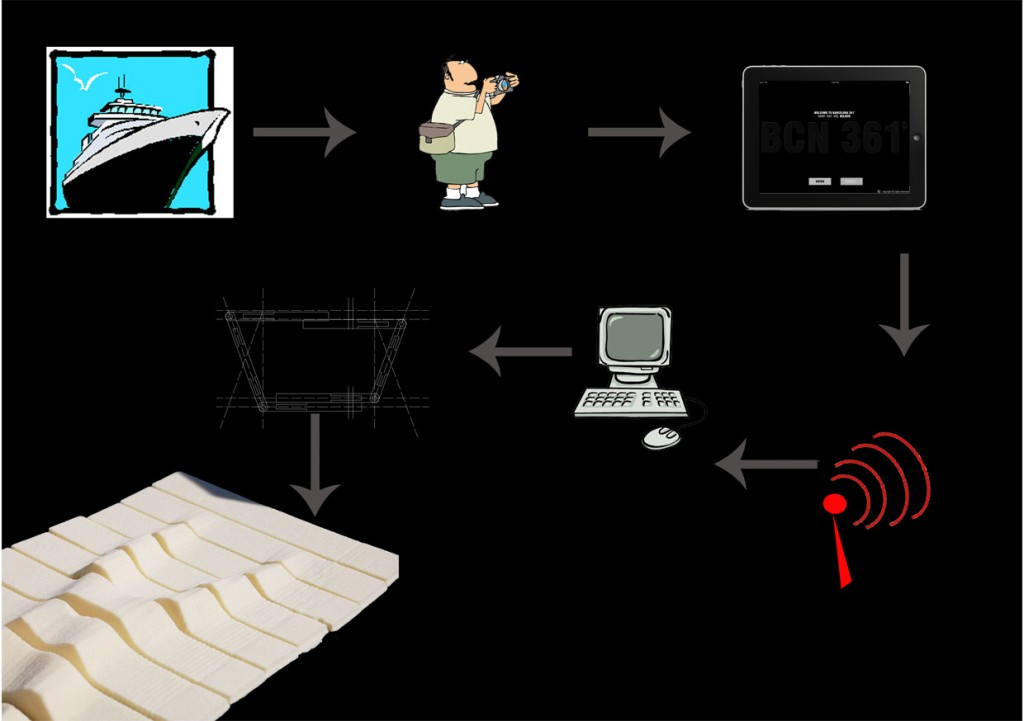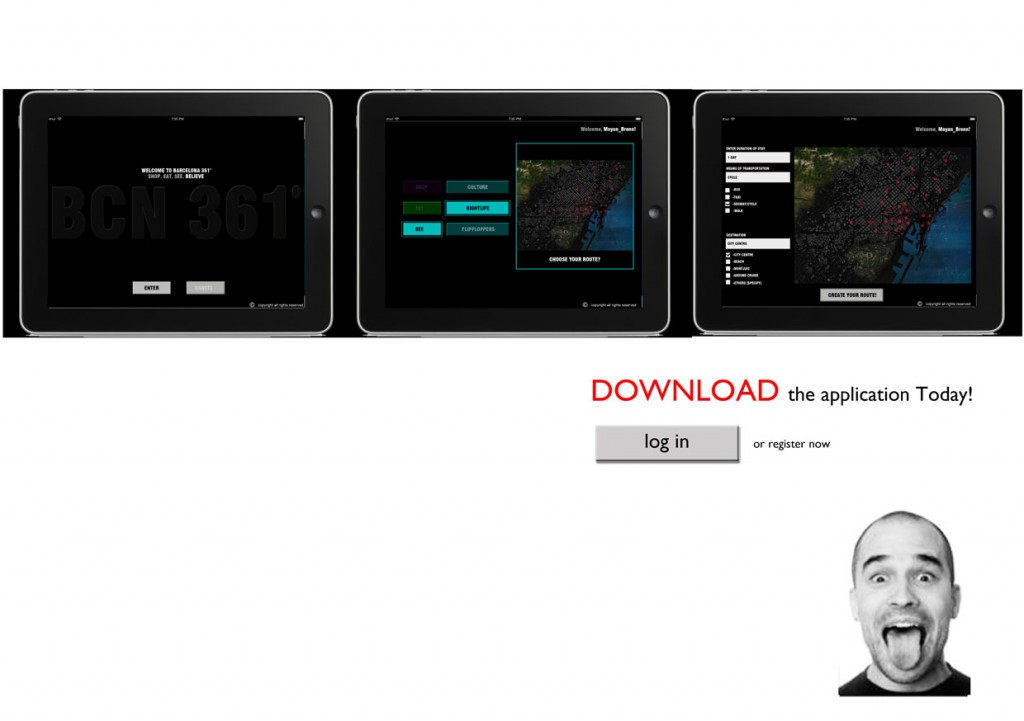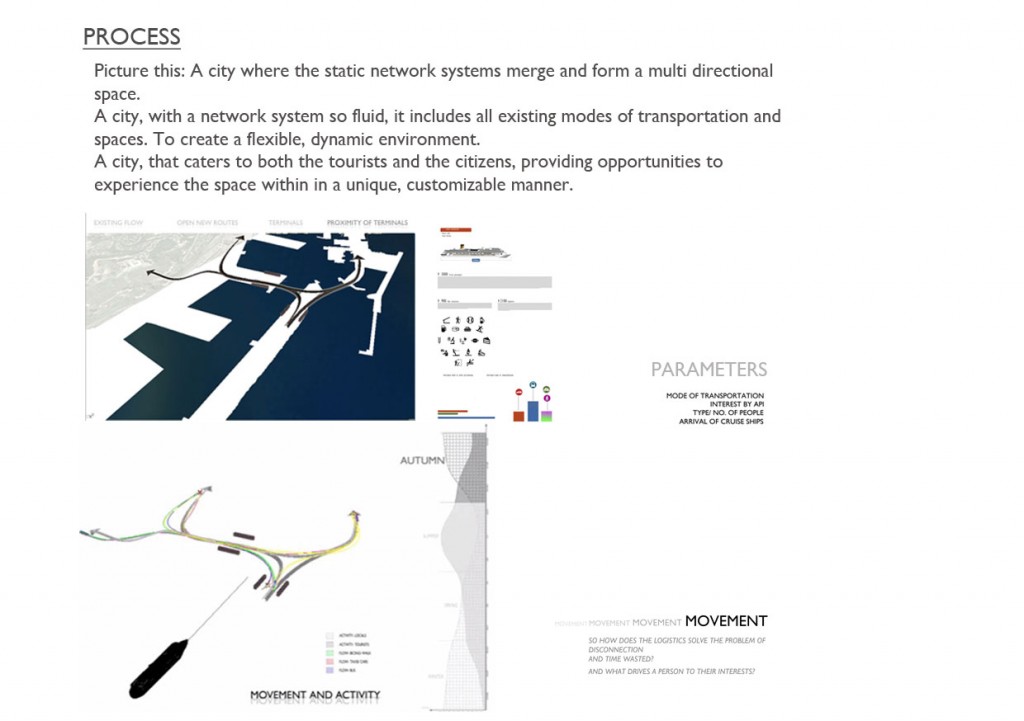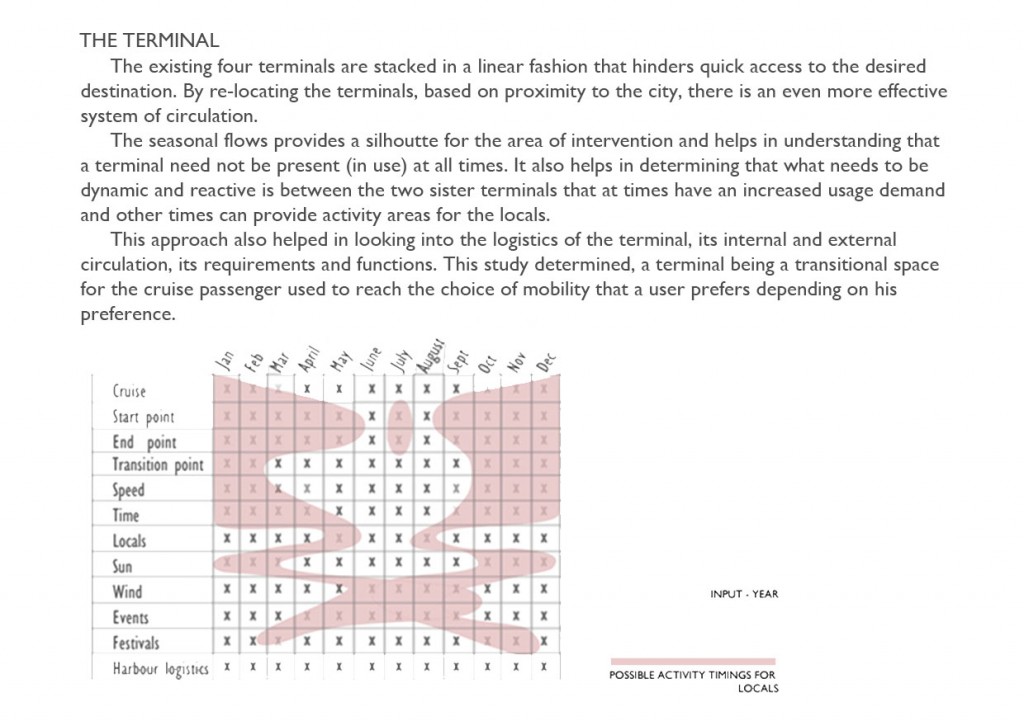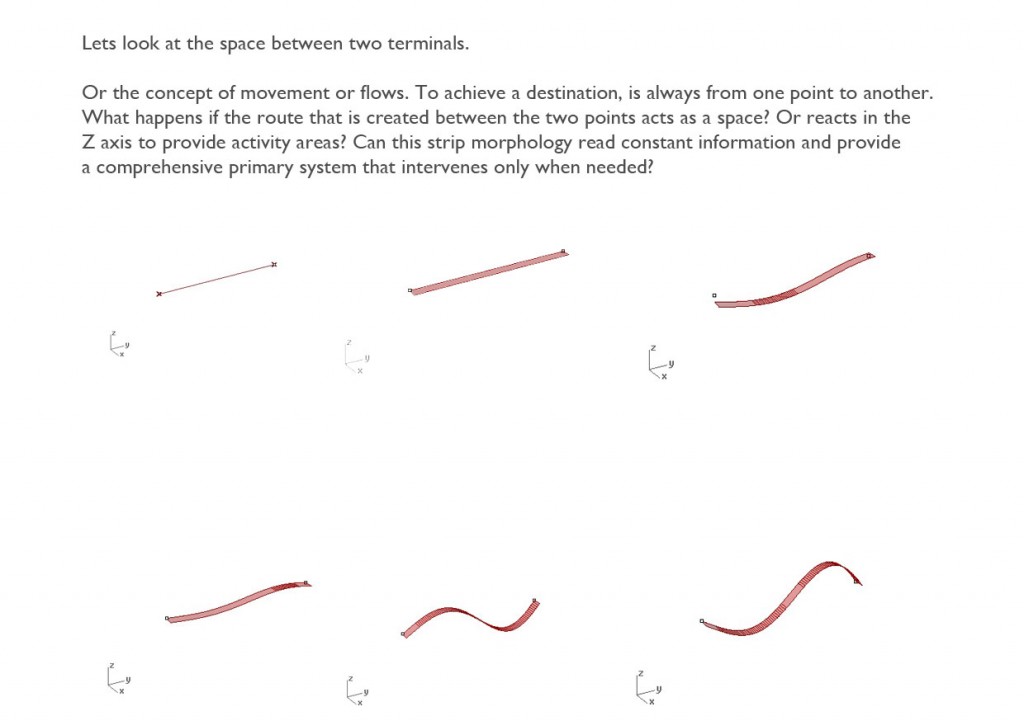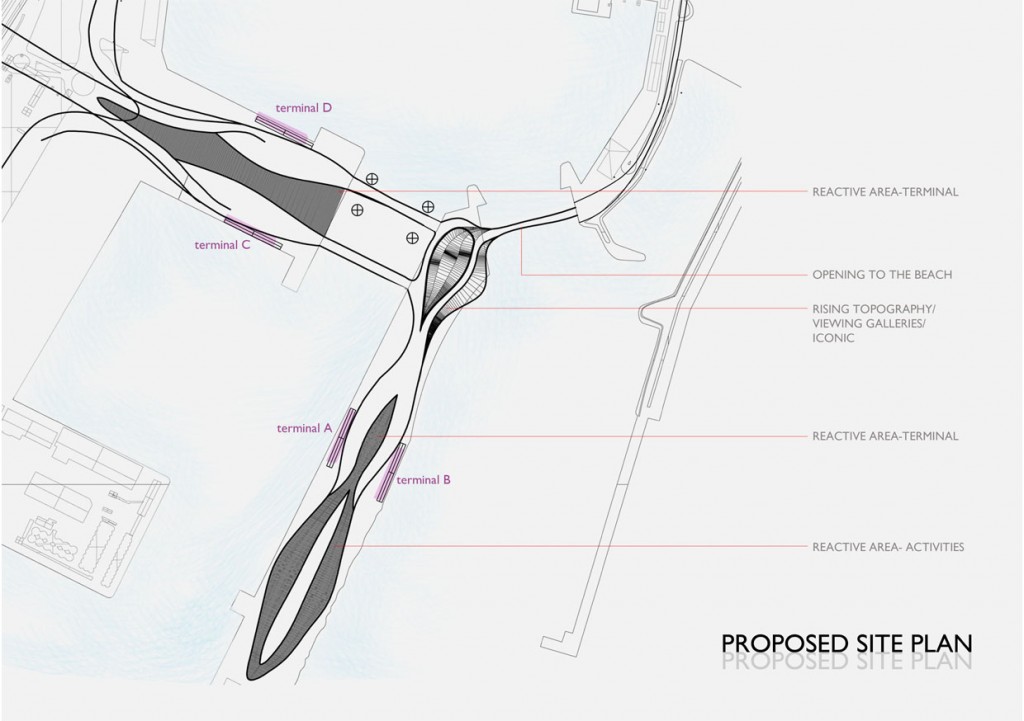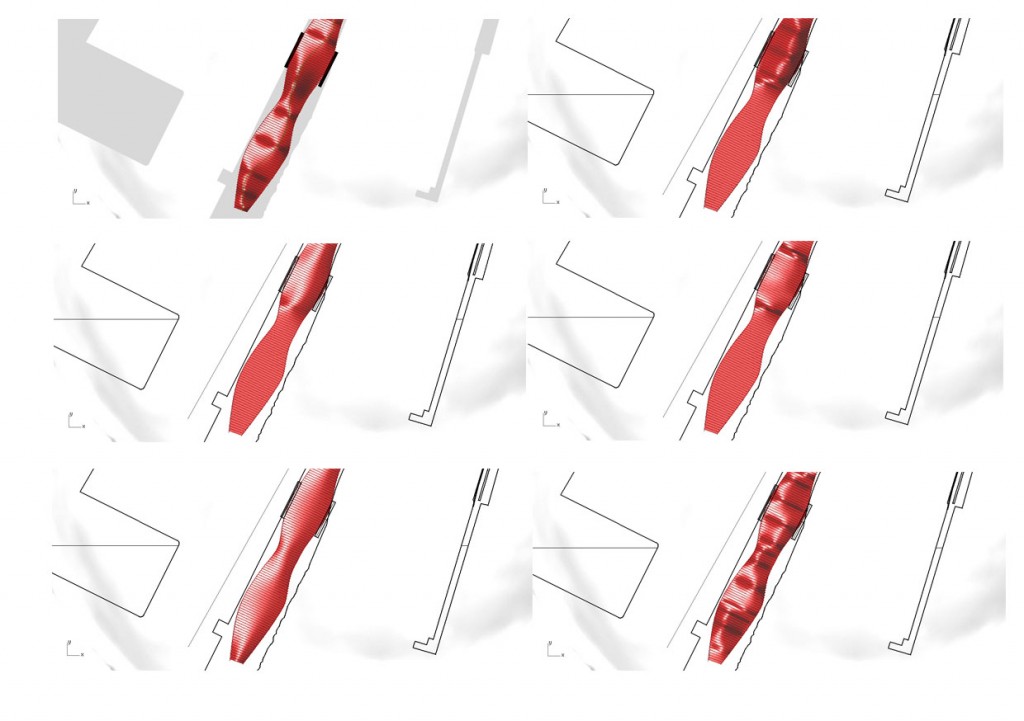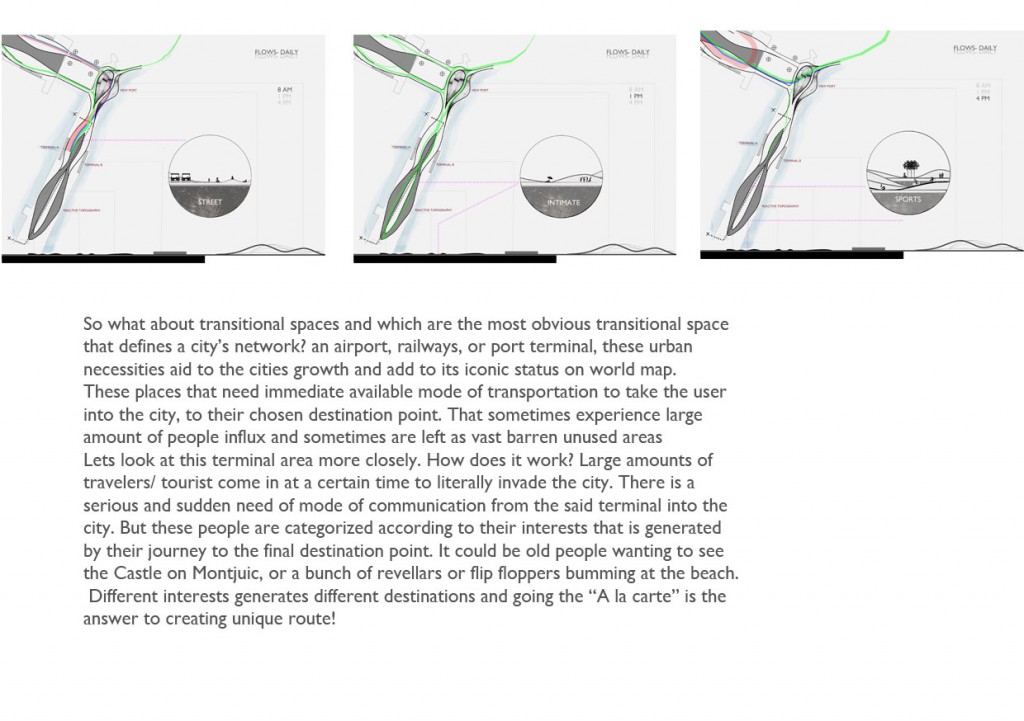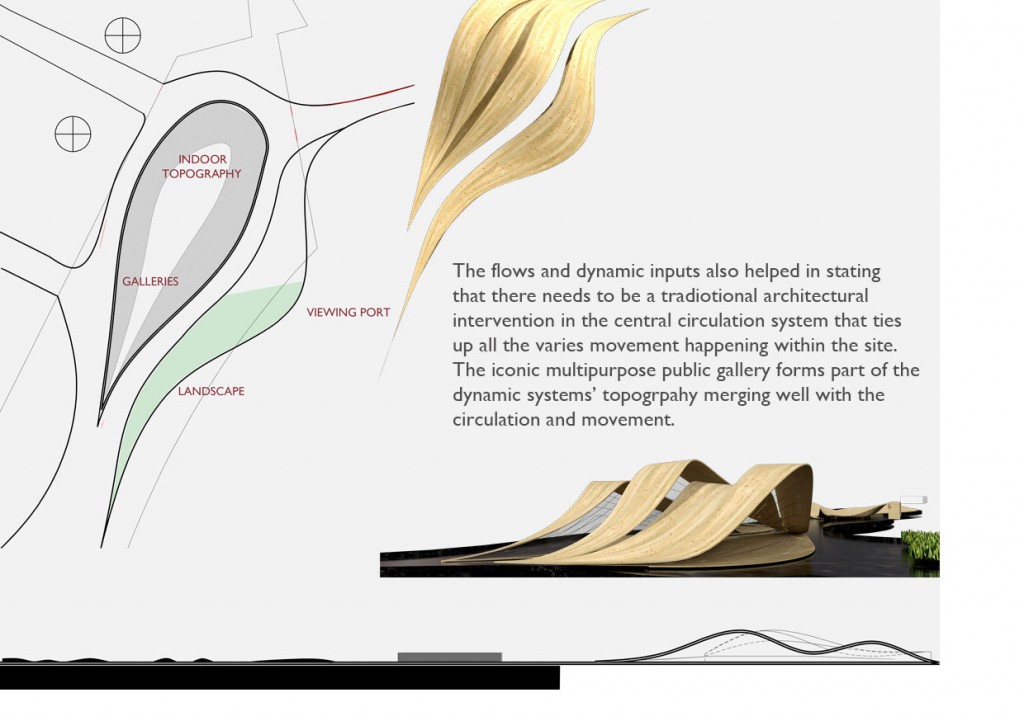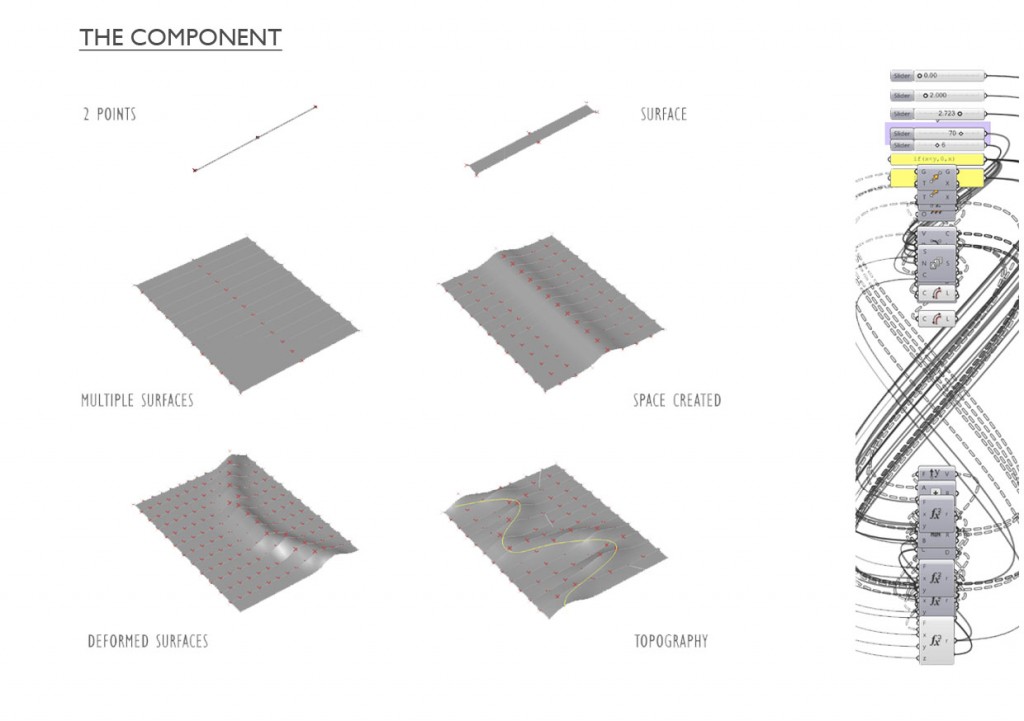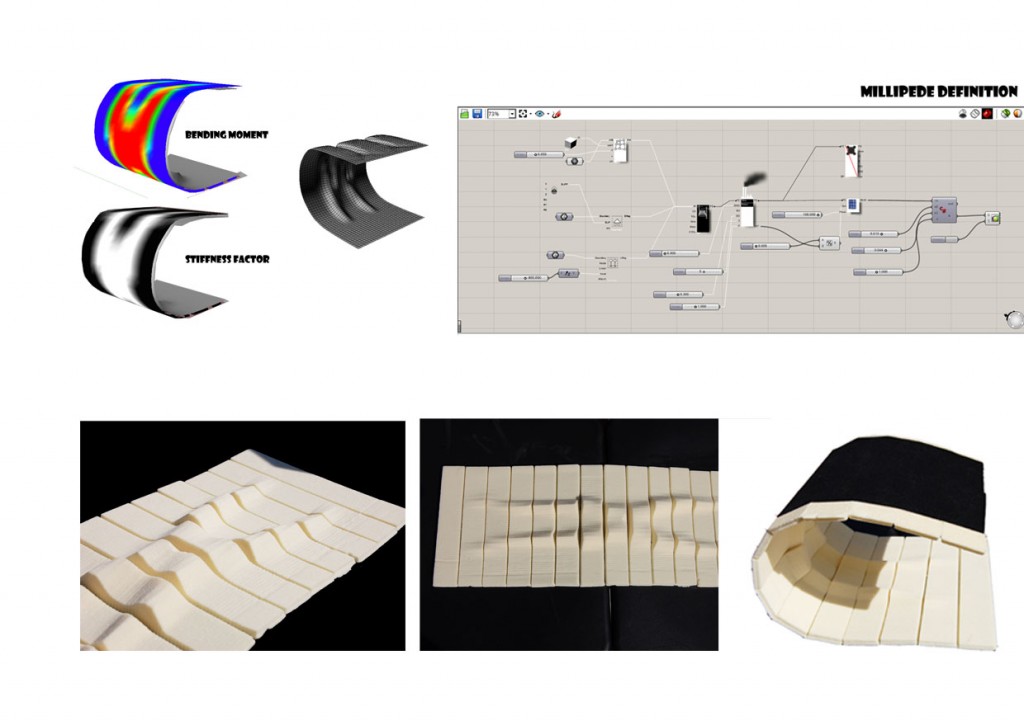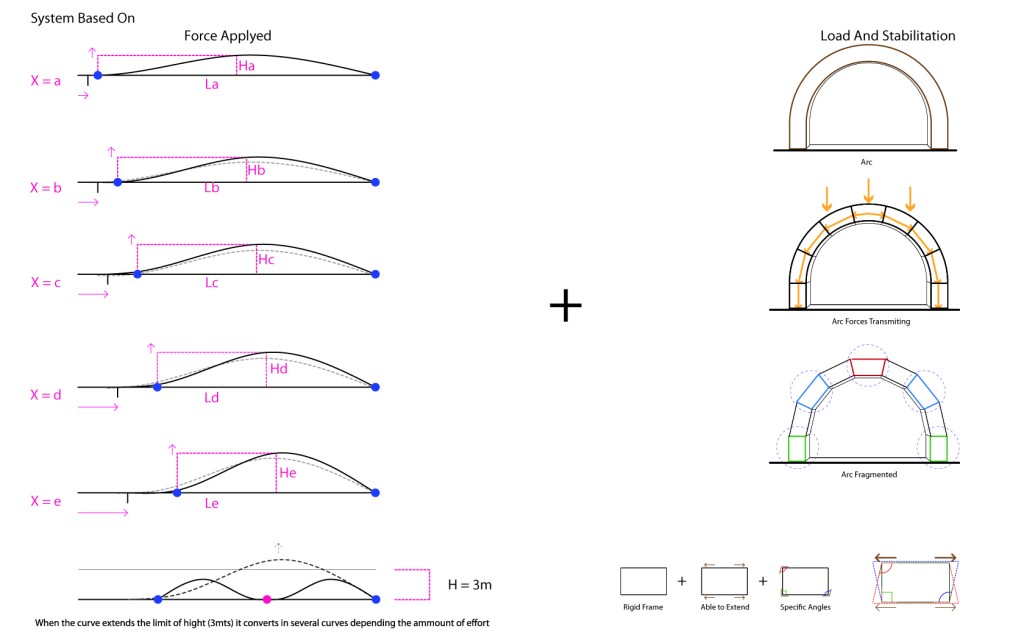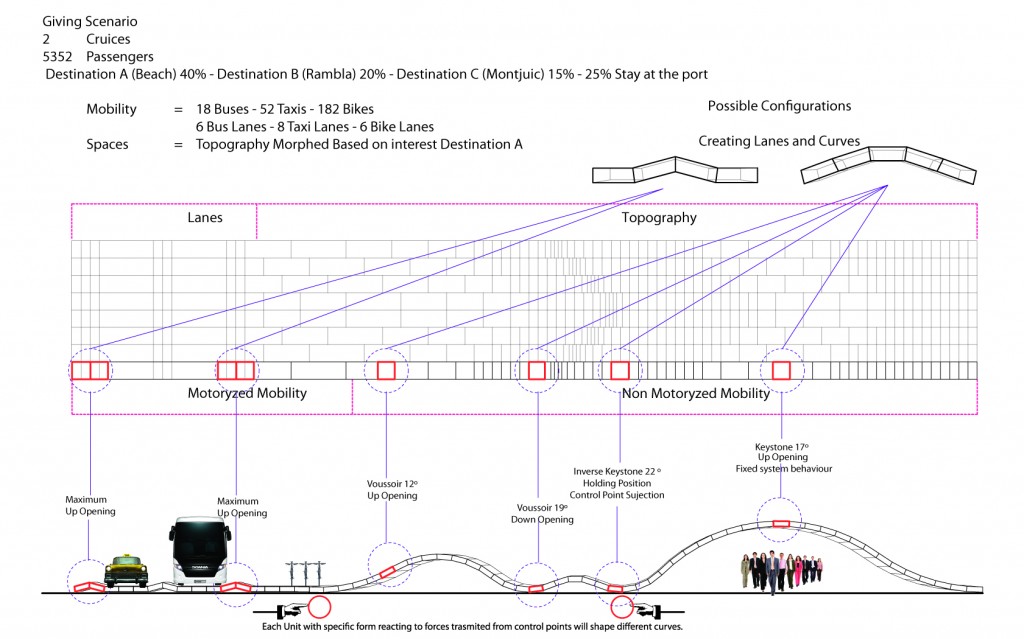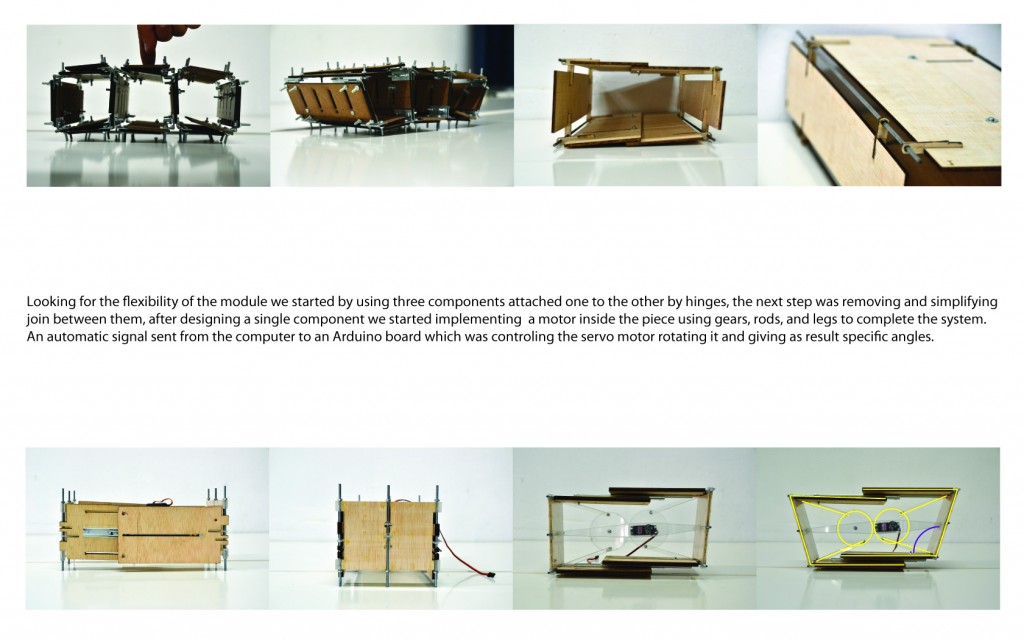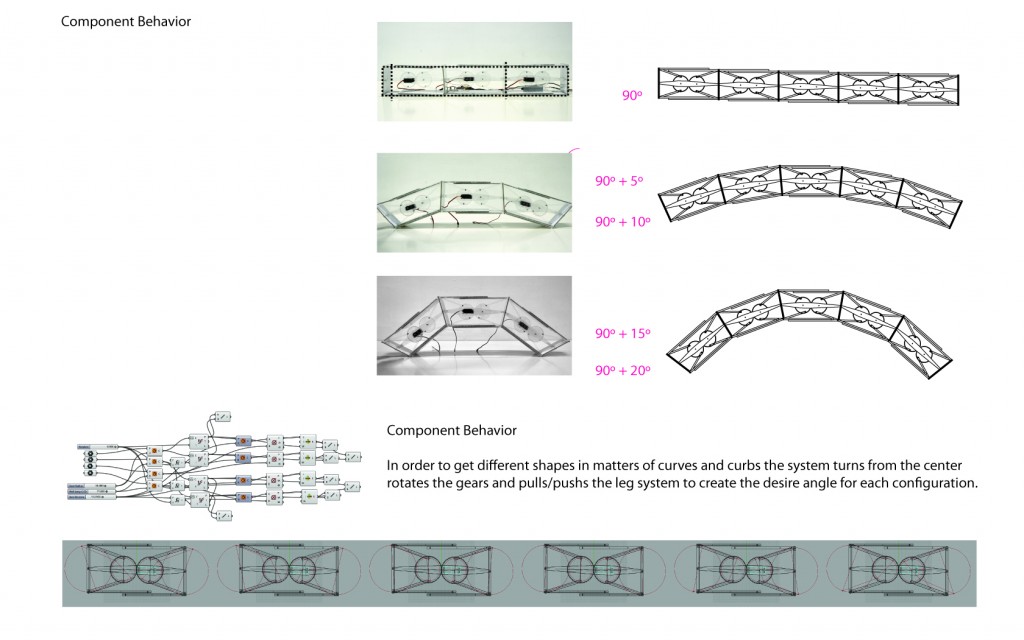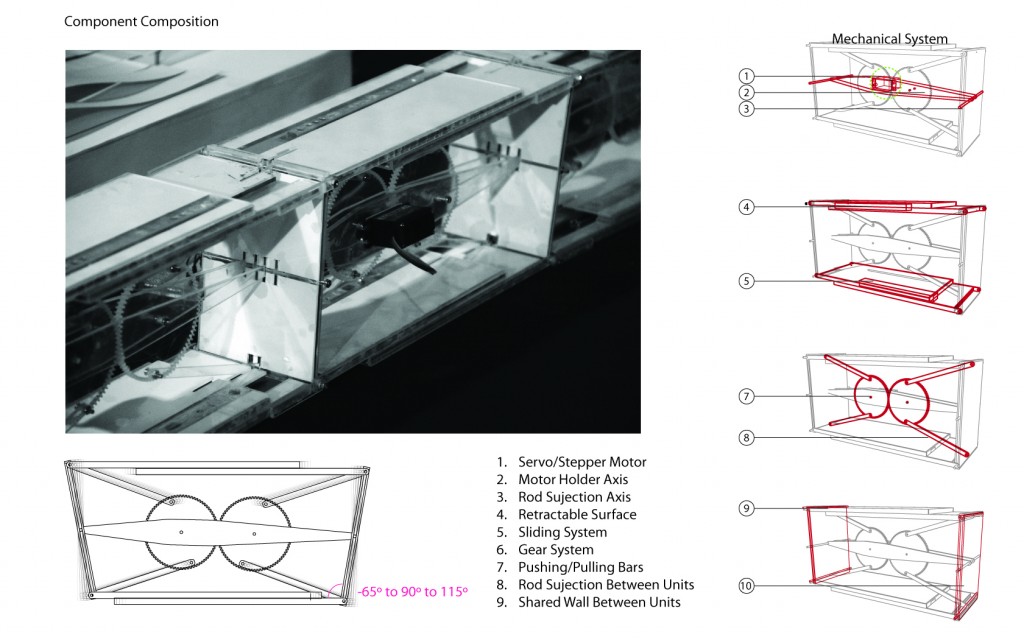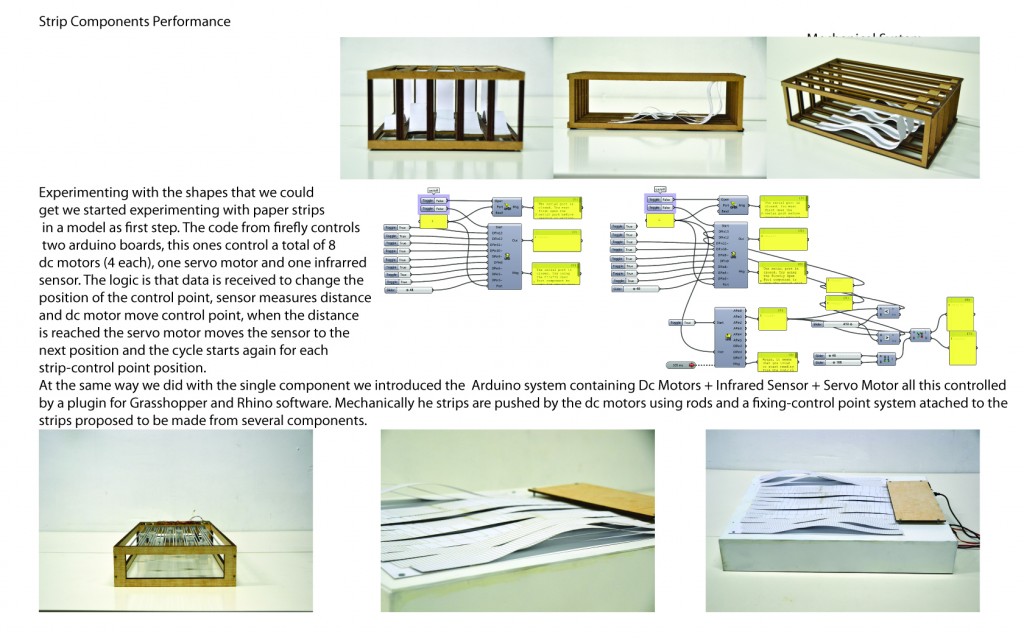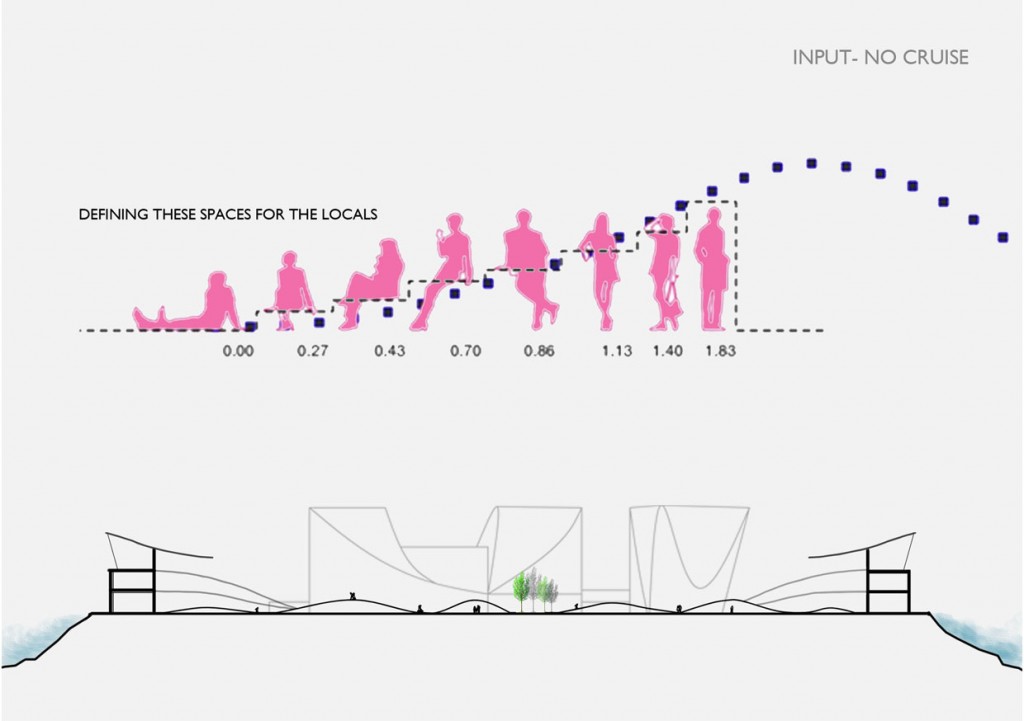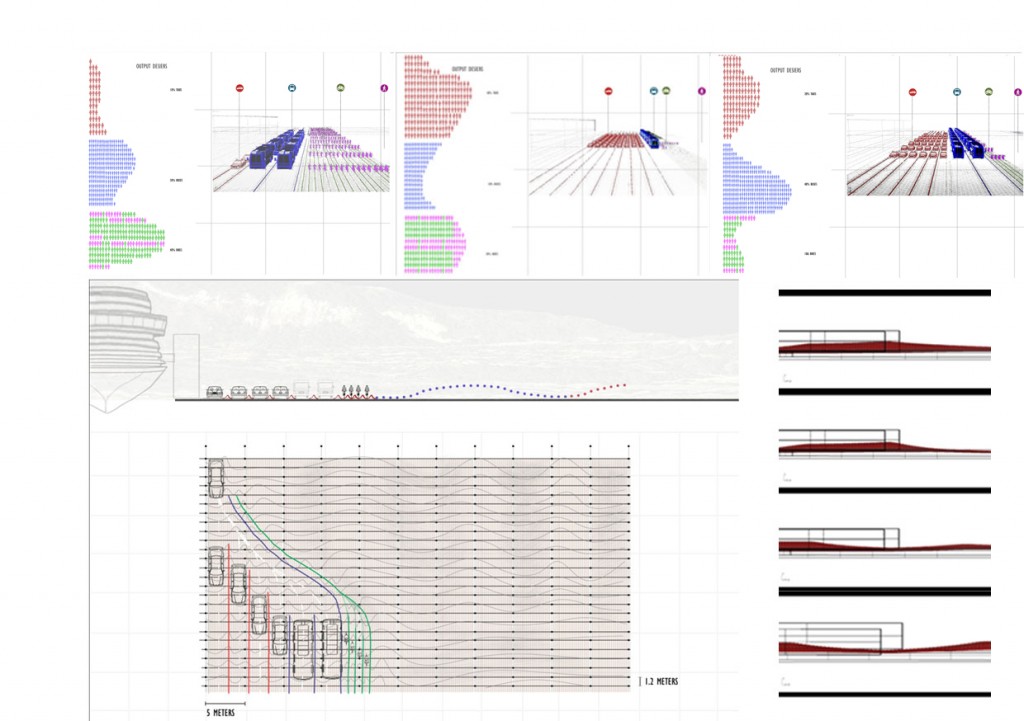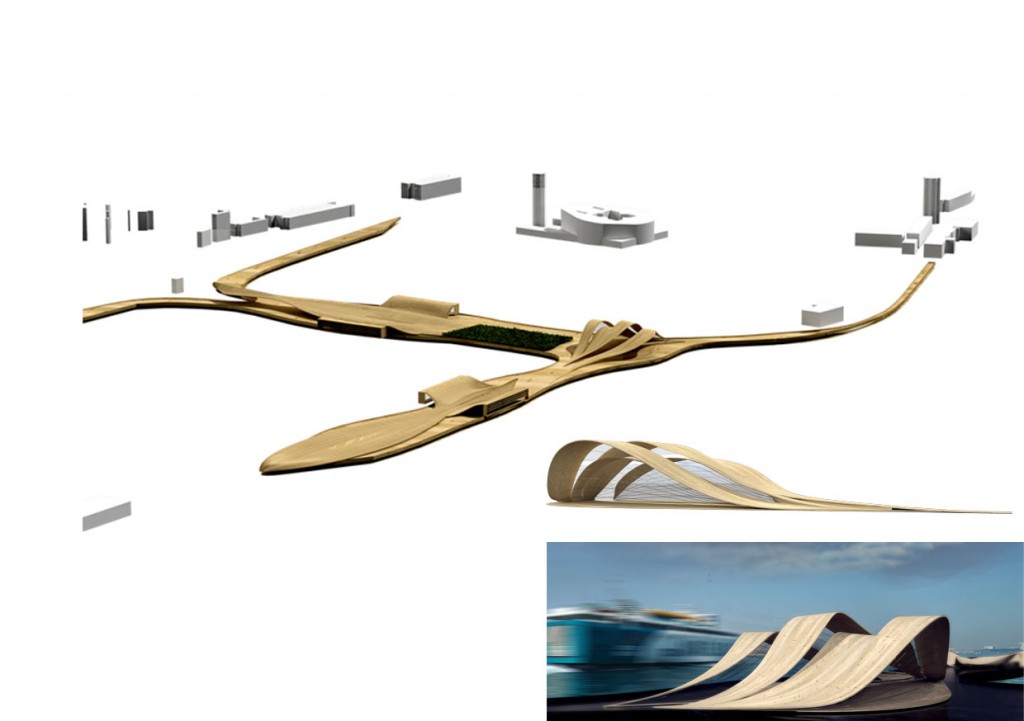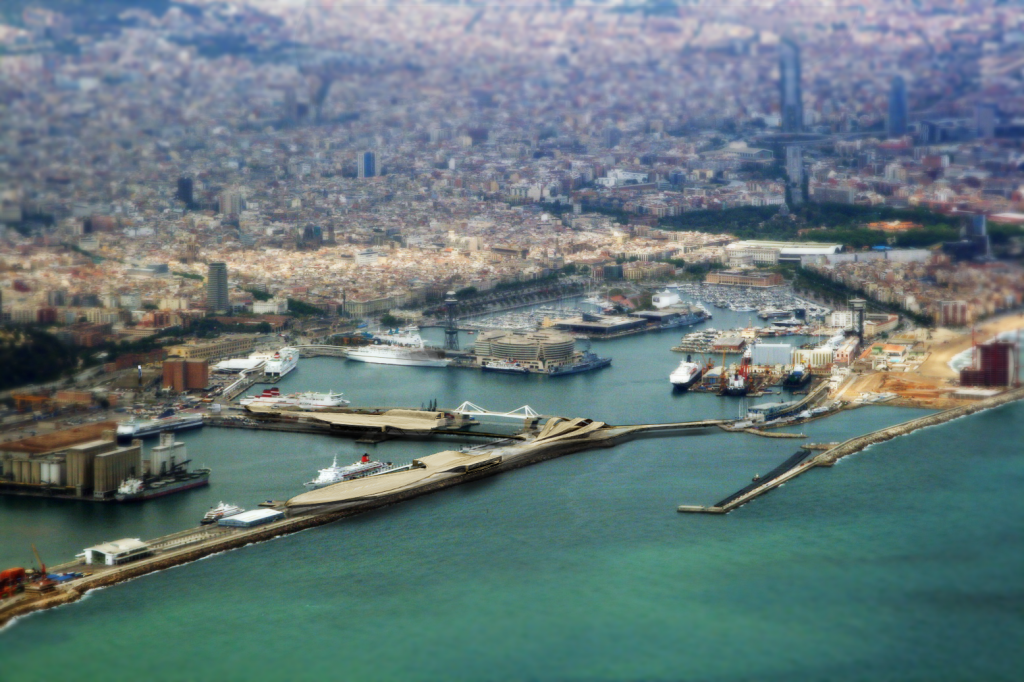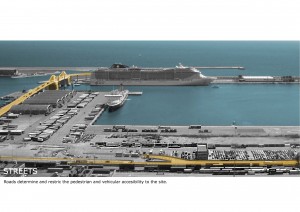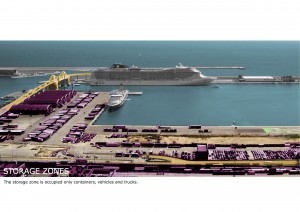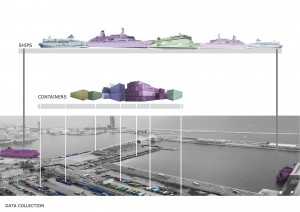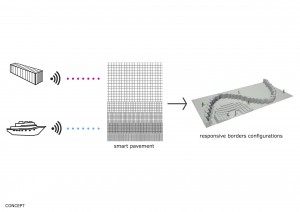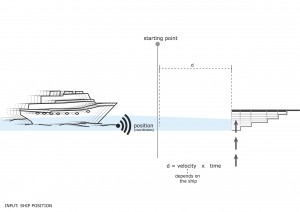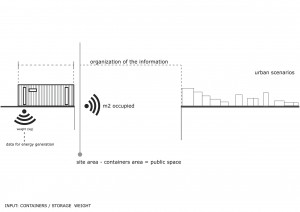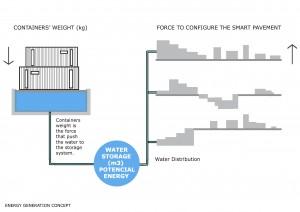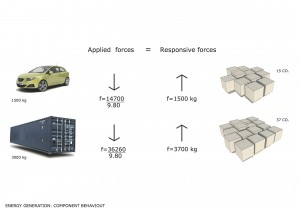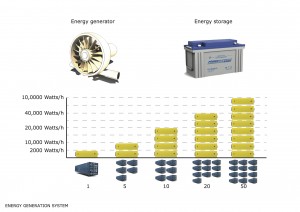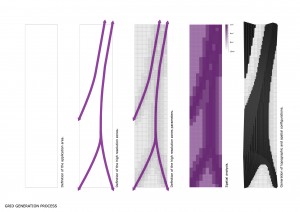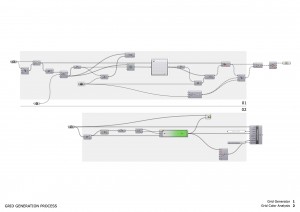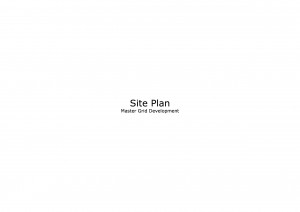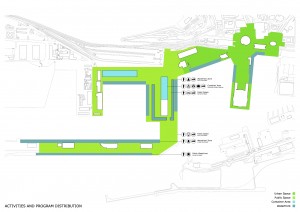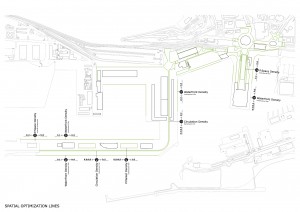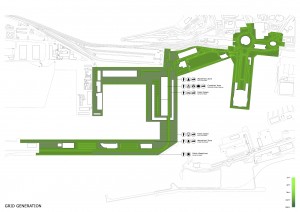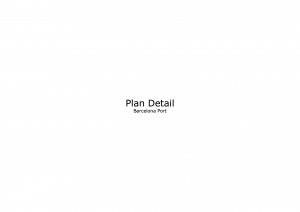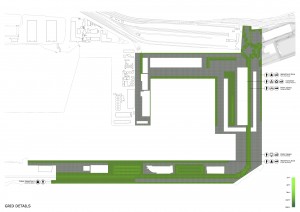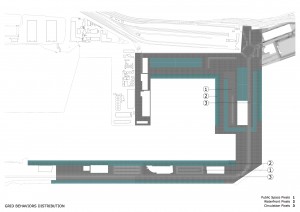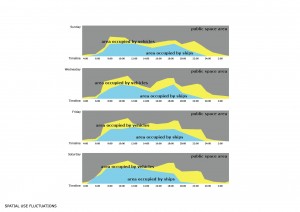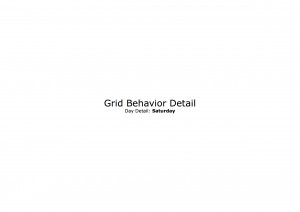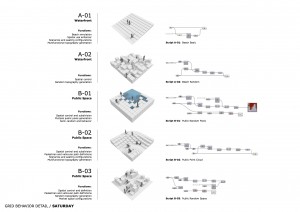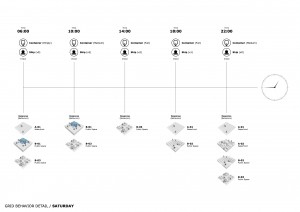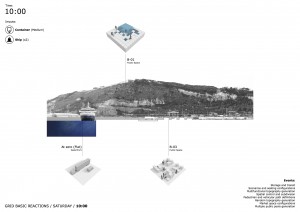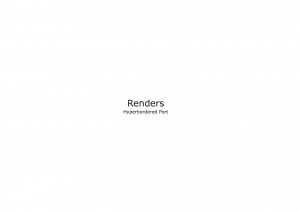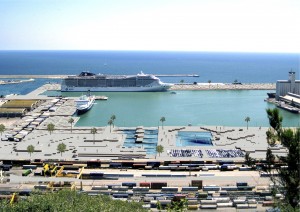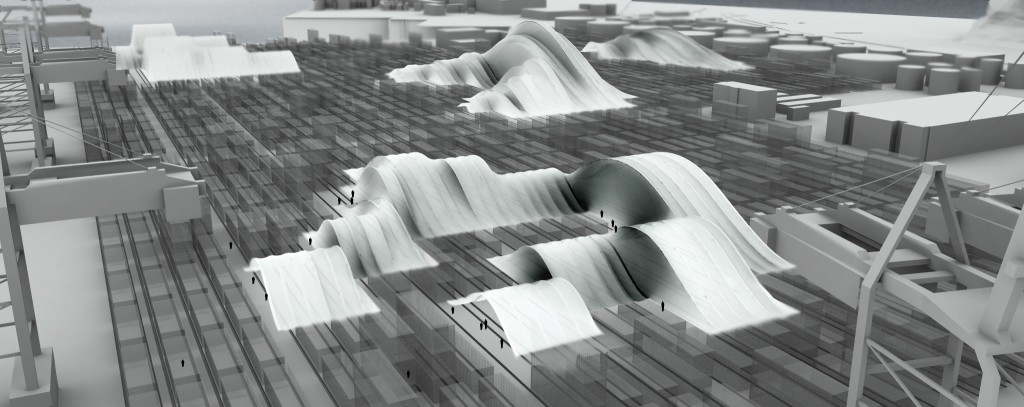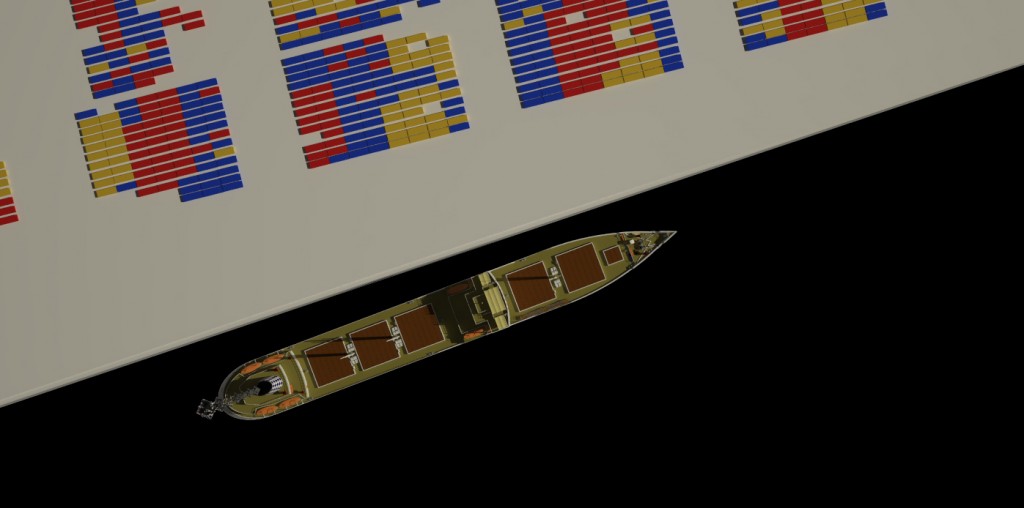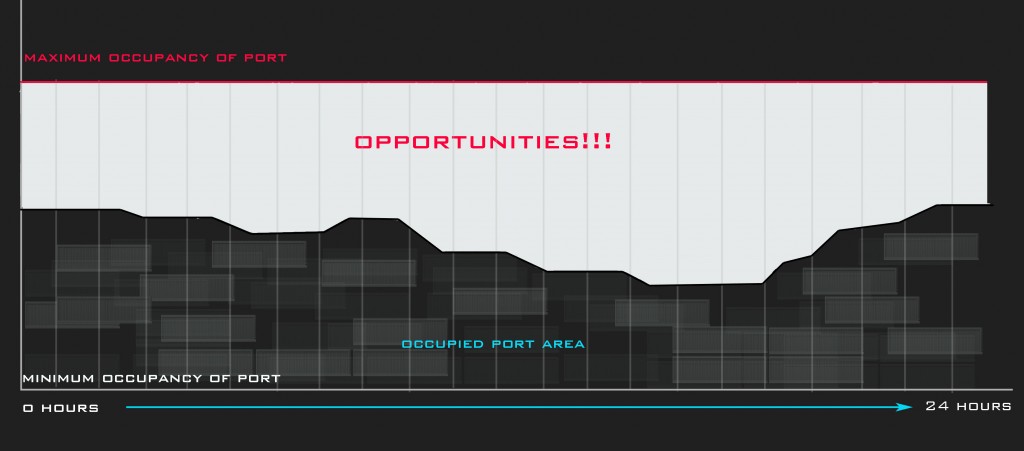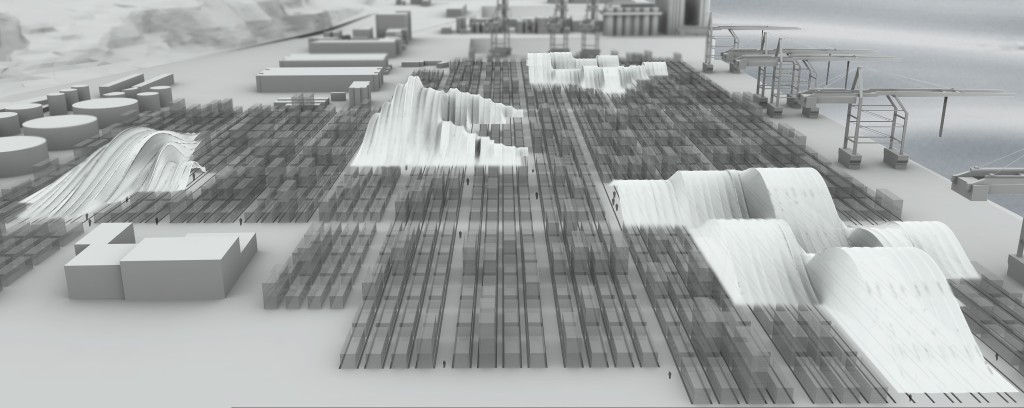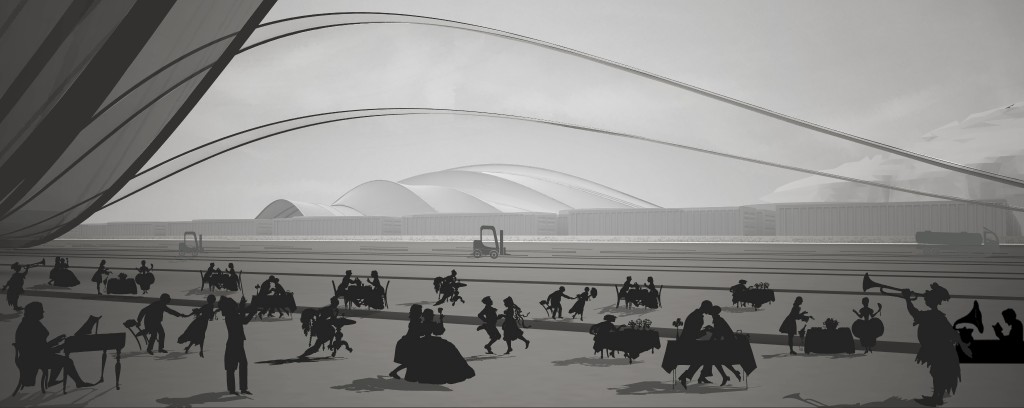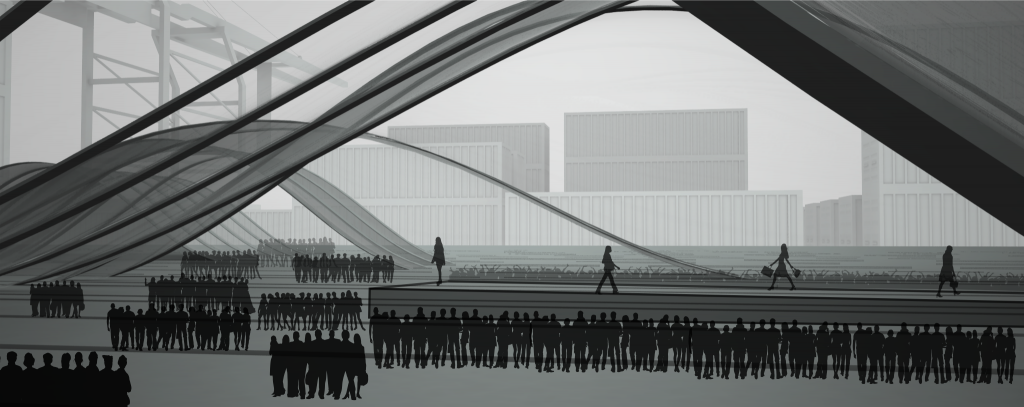Port Terminal BCN – 361º
NYMPHAEACEAE
NYMPHAEACEAE
Aquatic Energy Carrier System
DS1 2011/12
Seif El-Din Shawky / MAA 2012
Our purpose is to formulate a fragment of infrastructure, an input/output component that integrates into a supply-demand based adaptive mainframe, or the aptly named smart city. In this case of our studio’s agenda, my objective was specifically an energy-driven design with the starting point being a power source, animated by the potentials of salt as resource and out-at-sea deployment. It was always meant to produce more than it consumes, a culmination of conservation, filling in the gap in the urban operating system. Continuing that, the proposal revolves around the development of a prototypical unit, which moves across the aquatic territories of Barcelona, yet moves seemingly on its own. It’s propulsion is the wind, it’s battery is a salt-fresh chemical cataclysm, it’s generator a simple piezoelectric bimorph energy harvester, and it’s guide a control center at the Estany de cal Tet in Llobregat’s marshland. Working essentially on the parameters of wind speed, direction and a feedback inverse rotation mechanism, it is parametric in the sense that it is dynamically-oriented in both program and form. Nymphaeaceae acts on two levels; as a singular unit, and as a collective. It is not a notion of imposition, it is an environment that succumbs to its surroundings.
‘Ode to Salt’ is a series of films with focus on remedying the Llobregat delta’s delicate eco-system and symbiotic relationship with the port of Barcelona through a milieu of reformative interventions. The title is inspired by the Chilean poet Pablo Neruda’s poem ‘Ode to Salt’, and is derived from salt as a tangible yet ethereal and elastic medium through which the emergence of large urban structures out at sea may crystallize.
However, note the following film is a narrative-driven segment with an atmospheric quality. It is not meant as a concrete realisation of physicality but rather as a demonstration of the forces at play and the underlying potentials existing within the site.
-
‘RS1 : Emergent Territories second phase studio workshop at the Institute of Advanced Architecture of Catalunya’
iaacblog.com/maa2011-2012-emergentterritories/
Ode to Salt Series 3.2012
Ode to Salt Series 4.2012
Prototype Development : http://www.youtube.com/watch?v=zZeRDMue4cY&feature=youtu.be
IaaC MAA_11-12 Emergent Territories
Hyperbordered Port: Final Presentation

See the full presentation here.
Project Animation
This animation tries to show an initial schematic idea, broadly, about an architecture that is capable of evolve constantly in order to adapt itself to the different changes that its context generates. A project where the form is no longer a barrier to the function, but an input to multi-functionality.
Prototype Development
This is a short video showing a little about the developing process of the reactive prototypes for the Hyperbordered Port project. The main objective was to test and develop a simple mechanism, which was capable to receive certain inputs in order to obtain certain controlled responses. The final inputs and outputs are detailed on the presentation.
Port I-filters
The project idea is to integrate an infrastructural system in the port area which can minimize the reach of harmful gases to the city and even convert them to fresh water and energy through special filters which will be implemented in the system. Developing an interactive model responding to changeable parameters and able to adopted to real time data feedback through two different mechanism.
Video link for animation and per-formative model:
PORTHACKER
IaaC MAA_11-12 Emergent Territories
Anna Popova, Emily Sato, Minu Surana
The seed of an idea was hence laid. Why not give back the port to the city by activating the dead spaces for the people to use, manipulate and design in their own unique ways?
Analysing the logistics of the Port, the loading and unloading of containers, goods, oil and other products, we noticed that every time a container ship is loaded from the port it would leave behind empty spaces that remain untouched for a span of few hours. These temporal spaces only helped us strengthen our idea further.
We went on to study these void formations throughout the port in the span of 24 hours, to understand the scale and quality of these spaces.
We were able to categorize these voids based on their cause of formation, that is container voids, parking voids, factory voids and so on in a span of 24 hours.
The opportunities generated from these were numerous and of unique characteristics.
Hypothesis:
a space may be defined by its usage, environment, volume and time. Port de Barcelona is one such space being characterized and having unfathomed attributes of the same, yet to be explored. An orchestrated play of such spaces may be constructive, liberating and help redefine the fundamental concept of port spaces.
Void optimization would only be possible if the user (like you and me) would be able to access them with ease.
The concept of simple user interfaces could help achieve this.
Our site intervention concentrates on the container area of the port.
We rearranged and grouped the existing voids to create optimal formations.
The concept of our system deployment is based on existing real-time data collected at the port.
From these sensor detecting voids, anchoring points for the infrastructure can be defined.
A panel of 14 bending components sits in an area of 12 by 4 containers.
The former mentioned anchoring points are realised with the help of locking systems placed at container length intervals.
Pushing systems exist at the end of each component to achieve the infrastructure.
The consequences of our intervention at an urban scale could provide various playful scenarios in the future, leading to new building formations, typologies and so on.
Grasshopper definition
For our prototype, we first tested the bending of wood in 1:1 scale.
After joining multiple panels and analyzing the merits and demerits of the same, we were able to construct our final prototype in 1:10 scale with manual locking and pushing systems.
Renders


